My second account here, a writeblr. Main focus will be talking about my WIP(s), as well as reblogging writing advice - also to organize all the writing-related posts I reblog from my main.
Don't wanna be here? Send us removal request.
Text
Resources For Writing Dystopian/Apocalypse Stories
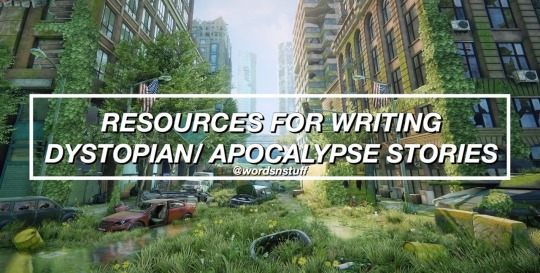
Ko-Fi || Masterlist || Work In Progress || Request
Dystopian Resources
Characteristics Of A Dystopia
7 Tips To Writing Dystopian Fiction
380 Best Dystopian Novels Of All Time
How To Build A Dystopian World
Dystopian Cliches To Avoid
Ultimate Guide To Writing Dystopian Literature
Realistic Political Strife
Political Corruption
Dystopian or Not Dystopian?
The 10 Most Important Dystopian Books and Films of All Time
How To Create A Dystopia
The future of energy
Waste management in SF
Enclosed ecosystems and life support
Near-future scenarios for us & our planet
Dystopian Prompt Generator
Totalitarianism
Propaganda
Apocalypse Resources
Writing Apocalyptic Stories
A Study In Physical Injuries
GunHoo
Snipercountry.com
Tips for writing blood loss
The Writer’s Forensics Blog
Poisonous Herbs and Plants
Apocalypse World
Cliches To Avoid
Mass Depopulation Conspiracy Theory
How Long Would Infrastructure Last?
What Does Nuclear Radiation Do To Human Bodies?
How Does Nuclear Radiation Do Its Damage?
What Would Happen If Humans Just Disappeared?
Preindustrial Society
Nuclear radiation for writers
Climate change and cli-fi
Mutation myths in fiction
Plagues in science fiction and fantasy
Rogue viruses in science fiction
Apocalypse Generator
World Building
A Politics Of Worldbuilding
Government Worldbuilding
The Five foundations of Worldbuilding
Dystopian World Building Worksheet
Apocalypse Hypotheticals
Climatology
Planetary Geography
Water Geography
Rational Wiki
BioMedNet
Phys
Support Wordsnstuff!
If you enjoy my blog and wish for it to continue being updated frequently and for me to continue putting my energy toward answering your questions, please consider Buying Me A Coffee.
Request Resources, Tips, Playlists, or Prompt Lists
Instagram // Twitter //Facebook //#wordsnstuff
FAQ //monthly writing challenges // Masterlist
MY CURRENT WORK IN PROGRESS (Check it out, it’s pretty cool. At least I think it is.)
5K notes
·
View notes
Photo


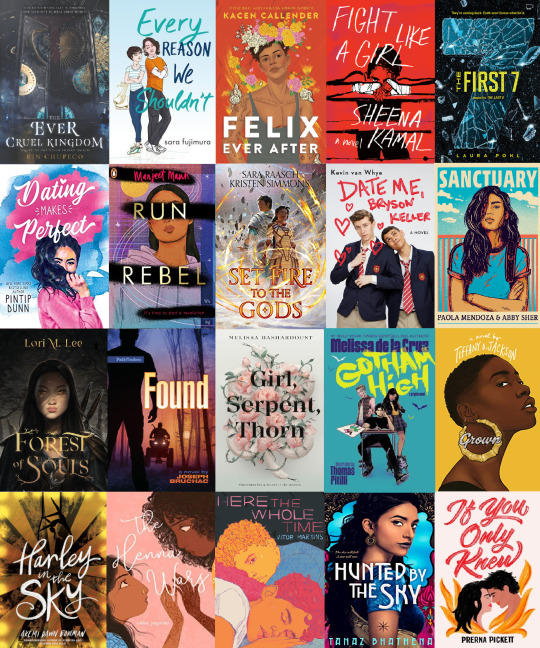

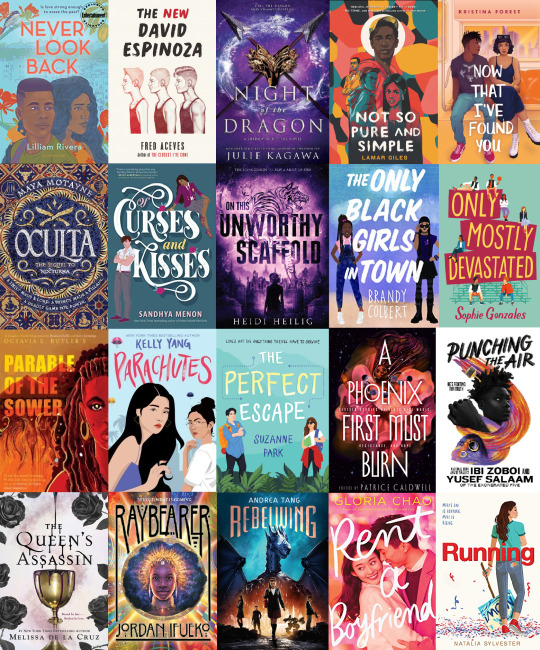



2020 YA Reads By Authors of Color
10 Things I Hate About Pinky by Sandhya Menon - The follow-up to When Dimple Met Rishi and There’s Something about Sweetie, Pinky and Samir pretend to date—with disastrous and hilarious results.
145th Street: Short Stories by Walter Dean Myers - A salty, wrenchingly honest collection of stories set on one block of 145th Street.
A Map to the Sun by Sloane Leong - A coming-of age-story about a struggling girls’ basketball team of a fictional neighborhood in the LA area.
A Song Below Water by Bethany C. Morrow - About the strength of black sisterhood set in Portland, OR, best friends Tavi and Effie discover their true supernatural identity when Effie starts being haunted by demons from her past, and Tavia accidentally lets out her magical siren voice during a police stop.
A Song of Wraiths and Ruin by Roseanne A. Brown - Inspired by West African folklore in which a grieving crown princess, Karina, and a desperate refugee, Malik, find themselves on a collision course to murder each other, despite their growing attraction.
All Boys Aren’t Blue by George M. Johnson - Journalist and LGBTQ+ activist George shows readers how they can fight for themselves or be allies in the struggle for equity and equality.
A Breath Too Late by Rocky Callen - After 17-year-old Ellie dies by suicide, she looks back on the events of her life that led up to the moment, directly addressing the characters in her world—including her mother and the boy she loved—both animate and inanimate, interweaving past and present.
All The Days Past, All the Days To Come by Mildred B. Taylor - The saga of the Logan family–made famous in the Newbery Medal-winning Roll of Thunder, Hear My Cry–concludes in a long-awaited and deeply fulfilling story.
All The Things We Never Knew by Liara Tamani - After locking eyes on a Texas high school basketball court, black teens Carli and Rex discover how first love, heartbreak, betrayal, and family can shape you—for better or for worse.
Almost American Girl by Robin Ha - A Korean-born, non-English-speaking girl, abruptly transplanted from Seoul to Alabama, struggles with extreme culture shock and isolation, until she discovers her passion for comic arts.
And the Stars Were Burning Brightly by Danielle Jawando - A story of suicide, mental health, bullying, grief and growing up around social media, after 15-year-old Nathan discovers the horrifying truth about his brother’s suicide.
Anna K: A Love Story by Jenny Lee - A modern reimagining of Anna Karenina, set between Manhattan & Greenwich, CT, where a Korean American “It Girl” is caught between her picture-perfect, family-approved boyfriend and the guy who just might be her one true love, along her high-flying cast of friends.
The Archer at Dawn (The Tiger at Midnight #2) by Swati Teerdhala - Set in an Indian & Hindu-inspired world, long-held secrets will force Kunal and Esha to reconsider their loyalties—to their country and to each other.
b, Book and Me by Sagwa Kim - A poignant coming of age story about two Korean high school girls, who equally despair over and desire adulthood.
Banned Book Club by Hyun Sook Kim, Hyun Ju Ko & Ryan Estrada - Set against the backdrop of political oppression, bookish college student Hyun Sook finds her political views slowly challenged after she joins the Banned Book Club and befriends a group of student activists.
Before The Dawn (RWBY #2) by E.C. Myers - Unsure of whom they can trust, Teams CFVY and SSSN must contend with new teammates and uneasy rivalries, all while The Crown continues to plot their next move.
The Betrothed by Keira Cass - Lady Hollis Brite realizes that falling in love with a king and being crowned queen may not be the happily ever after she thought it would be, after she crosses paths with a commoner who challenges her future.
Black Girl Unlimited by Echo Brown - Echo Brown is a wizard from the East Side, who transfers to the rich school on the West Side, and an insightful teacher becomes a pivotal mentor. But a black veil of depression soon threatens to undo everything she’s worked for.
The Black Flamingo by Dean Atta - A boy comes to terms with his identity as a mixed-race gay teen - then at university he finds his wings as a drag artist.
The Black Kids by Christina Hammonds Reed - A coming-of-age debut exploring race, class, and violence through the eyes of wealthy black teen Ashley, whose family gets caught in the vortex of the 1992 Rodney King Riots.
Blazewrath Games by Amparo Ortiz - 17-year-old Lana Torres, who after rescuing a prized dragon, is awarded a spot on her native Puerto Rico’s Blazewrath World Cup team. But the return of the Sire, an ancient dragon, soon threatens to compromise this year’s tournament.
The Blossom and the Firefly by Sherri L. Smith - Set in Japan during eight days in 1945, two teens, former student Hana and violin virtuoso-turned-kamikaze-pilot Taro, find their lives intertwined in the midst of war.
Breath Like Water by Anna Jarzab - When swimmer Susannah Ramos finds her sports dreams put in jeopardy, she struggles to keep her career afloat, before two important people enter her life: a new coach with a revolutionary training strategy, and a charming fellow swimmer named Harry Matthews.
Broken Wish: The Mirror by Julie C. Dao - As 16-year-old Elva taps into her powers for the first time, she discovers a magical mirror and its owner—none other than the Witch of the North Woods herself. As Elva learns more about her burgeoning magic, the lines between hero and villain start to blur.
Brown Girl Ghosted by Mintie Das - When the queen bee of the school ends up dead following a leaked sex tape, Violet Choudry’s spirit world friends decide it’s the perfect time for Violet to accept the legacy of spiritual fighters from whom she’s descended. Her mission? Find the killer. Or else she’s next.
Cemetery Boys by Aiden Thomas - Latinx trans teen Yadriel, hoping to release his cousin’s spirit and prove himself as a brujo, accidentally summons the wrong ghost and resident bad boy Julian Diaz, falling in love with him.
Check Please!: Sticks & Scones by Ngozi Ukazu - Bitty and Jack must navigate their new, secret, long-distance relationship, and decide how to reveal their relationship to friends and teammates. And on top of that, Bitty’s time at Samwell is quickly coming to an end.
Cinderella Is Dead by Kalynn Bayron - 16-year-old Sophia would much rather marry Erin, her childhood best friend, than parade in front of suitors. At the ball, Sophia flees, hiding in Cinderella’s mausoleum. There, she meets Constance, the last known descendant of Cinderella and her step sisters. Together they vow to bring down the king once and for all.
Clap When You Land by Elizabeth Acevedo - Separated by distance and Papi’s secrets, sisters Caminos and Yahaira Rios, are forced to face a new reality in which their father is dead and their lives are forever altered.
The Court of Miracles by Kester Grant - In 1828, Paris, talented cat burglar Eponine Thénardier goes head-to-head with the nobility as well as the leaders of Paris’s criminal underground, during her quest to save her sister Cosette’s life, which will take her from the city’s dark underbelly to the glittering court of Louis XVII, following the dangerous days after a failed French Revolution.
Keep reading
25K notes
·
View notes
Text
My weird yet effective writing routine
To me, writing is quite an intuitive process. I basically just follow my gut. Nevertheless, throughout the years, I’ve been able to develop a pretty effective routine, and I’m going to share it with you now!
Writing circuits. I don’t know about you, but I’m super lazy, and I also love to procrastinate. So, instead of writing for three hours straight, I split this time into little circuits and plan them throughout the day. Let’s say I’ll write for an hour in the morning, then an hour and a half in the afternoon and so on. It’s also incredibly beneficial for your health – both mental and physical.
Have a plan. I’m a discovery writer, and I don’t really outline that much. But as I go about my day – eg. when working out, or running, or cooking, or eating, or sitting and doing nothing because of this procrastination right – I think about what I want to accomplish. And I usually ask myself the following questions. What is the purpose of this scene? Which characters should appear in this scene? Should it be more visual or more internally-focused? What actually happens? How should I describe it? Thanks to this, I have a general plan, and I’m much more motivated to actually write instead of visualizing that scene in my head (we all know this, don’t we?).
Write. Then I write. I write whatever pops into my head. I don’t care if it’s logical. I don’t care how many times I use abruptly, saw, felt, etc. I just allow my imagination to create this story.
Notes. When I end my final little session, I usually leave some comments for myself. What’s going to happen next, what’s the next big thing I want for my characters, etc. Having these notes makes everything easier; I immediately know what I’m supposed to do.
Having fun. I don’t care about the word count, deadlines, or anything like that. I enjoy the process, and I’m always very grateful for everything I write. I actually have this cute/weird habit: Whenever I end my writing session, I say ‘thank you’. Out loud. (Yeah, awkward, huh?) Thank you for my amazing imagination which allows me to create places and people in my mind! This kind of approach always makes me happy and even more motivated for my next writing session.
9K notes
·
View notes
Note
Hello! I’m writing a story with alternate povs, but in third person, and now I have to write a boy’s point of view and I don’t know how to, because I’ve never done it before... Do you have any tips?
These previous posts might help! :)
Creating a Realistic Male Character Writing Another Gender “No Boy Would React Like That”
————————————————————————————————-
Have a question? My inbox is always open, but make sure to check my FAQ and post master lists first to see if I’ve already answered a similar question. :)
34 notes
·
View notes
Text
Writing a novel when you imagine all you stories in film format is hard because there’s really no written equivalent of “lens flare” or “slow motion montage backed by Gregorian choir”
170K notes
·
View notes
Note
If you could give only one piece of advice to new writers, what would it be?
Easy: learn how stories work before you try to write one seriously.
Writing is something that appeals to a lot of people, and it’s something a lot of people dabble in for fun, or try out because they have a story idea… but…
If you’re writing a story with the intention of sharing it publicly, either by publishing it online, self-publishing, or seeking traditional publishing, it’s VITAL to learn how stories work before you start writing. Because if you don’t have even a basic grasp on story structure, sentence structure, POV, and tense, that story is going to be really hard to write well.
I genuinely believe the best way to learn how stories work is to read them… LOTS of them. If you read a lot of books and stories, you’re going to develop an instinctual understanding of the basic elements of story. And that instinctual understanding can only be enhanced by whatever else you learn.
So, seriously…

:)
————————————————————————————————-
Have a question? My inbox is always open, but make sure to check my FAQ and post master lists first to see if I’ve already answered a similar question. :)
122 notes
·
View notes
Photo




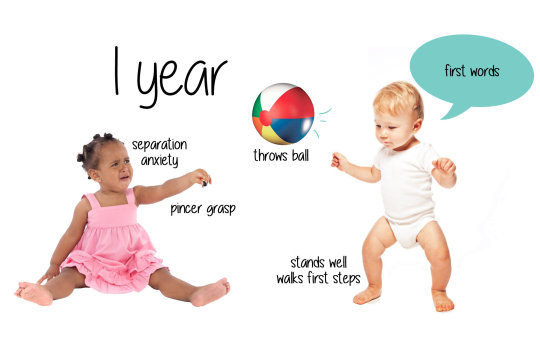


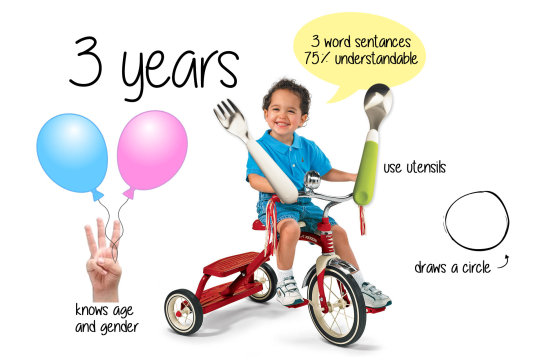

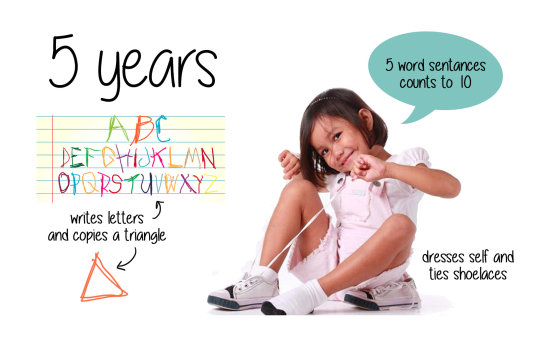
I’m pretty sure I’m not the only one who has trouble remembering developmental milestones. I put these together, but can’t take credit for any of the photography. Hope someone finds them helpful!
172K notes
·
View notes
Text
Quick Editing Tip: Down & Up
The words “down” and “up” are often unnecessary and can be edited out of your writing. More often than not, their meaning is implied in the words they’re attached to.
Before:
I sat down on the couch.
After:
I sat on the couch.
Down is implied in the verb “sit,” so it’s unneeded. Same thing goes for “up” in many cases:
Before:
I stood up.
After:
I stood.
Unless you’re a soldier, you probably aren’t going to “stand down,” so you can safely omit the “up.”
Of course, there are times when the words “down” or “up” are necessary. A quick test to see if they’re needed is just to delete them. If the sentence still makes sense without them, you’re good to go. If not, put them back in.
Hope this helps!
//////////////
The Literary Architect is a writing advice blog run by me, Bucket Siler. For more writing help, check out my Free Resource Library, peruse my Tumblr Post Guide, or get The Complete Guide to Self-Editing for Fiction Writers. xoxo
1K notes
·
View notes
Text
Free Resource Library for Fiction Writers - New Stuff!
Hey all, I added a new download to the Free Resource Library today!! It’s a world building checklist. If you’re already a subscriber, you can login to download it. If you’re not a subscriber, you can get access to the Free Resource Library right here.
Also, I’ll be sending out an email to current subscribers with the new download so if you can’t find your login details, don’t worry, you’ll be hearing from me soon! :)

Free Resource Library downloads:
Creating Character Arcs Workbook
Point of View Cheatsheet
Dialogue Checklist
Setting Checklist
Questions to Ask Before Hiring an Editor Printable Checklist
Proper Manuscript Format Printable Checklist
Short Story & Novel Submission Templates
World Building Checklist
Get access to the Free Resource Library right here.
Hope this helps!
//////////////
The Literary Architect is a writing advice blog run by me, Bucket Siler. For more writing help, check out The Complete Guide to Self-Editing for Fiction Writers. xoxo
2K notes
·
View notes
Link
Here’s what I’m reading and reviewing for the first month of January! Let me know what you’re reading for the start of 2020.
14 notes
·
View notes
Text
friendly reminder to write stories for you. you explain your idea to a friend and they're not over the moon about it?? you'd really like to write it just because it'll be fun and someone tells you not to?? you wanna use a concept you know is important to you right now and could really help you cope and they tell you that this "trope" has been overdone??? FUCK IT. write that stuff. do what's best for you. do what you want to. your personal insecurities are more than tropes. what you need to read will never be overdone. if someone doesn't like your idea, it doesn't matter, you like it. you might be the creator but that doesn't mean you can't be the audience and it certainly doesn't mean you can be kept from creating if that's gonna help you heal
8K notes
·
View notes
Text
Writing a sub-plot
Here are some tips for writing great sub-plots, romantic or otherwise.
1. When to introduce a sub-plot
Of course, every story is different. However, there is some consensus that it's good to introduce your sub-plot a little ways into your book
The main plot needs to be established first. The readers need to know the main character(s) and understand what the story is about. They need to care about the crux of the book and the characters first.
Then, you can introduce an intriguing subplot to keep their interest.
Don't wait too long, though. Anything after 1/3 through might feel forced and misplaced.
2. When to resolve the sub-plot
The sub-plot should be resolved before the main plot is.
Generally, you want your readers' attention focused on the main conflict once you reach the climax.
This means that you want to give them the resolution of the sub-plot a few pages/chapters before the big showdown of the main plot.
You'll see that most TV episodes also follow this guideline and it works.
You can, roughly, aim for the 3/4 mark if you're unsure.
3. Remember the sub in sub-plot
I love a good sub-plot, especially one about characters growing closer. However, if I pick up a sci-fi thriller from the bookstore only to read a 400 page love story, I'm gonna be disappointed.
You classify your genre according to your main plot. What is the main conflict or purpose in your story? That should be the focus.
A sub-plot of whichever variation is always secondary to the main storyline.
If you focus too much on the subplot, it may overpower your real story and bump your book into a whole other genre.
So, maybe have the romance take a backseat when the main plot comes to play.
4. When to indulge
Let's be honest; we all love writing our sub-plots. They often contain the scenes you envisioned when thinking up your story - the conversations and fluff, the banter and depth of character. This, unfortunately, means that it's easy to get carried away, as I made clear in my last point.
However, there is a part of your book in which you can indulge, a point during which you can explore the sub-plot to your heart's desire.
When is that point? The middle.
Often, the main plot slows down in the middle of the book. The characters need training or there's a period of false security etc. Many stories have a lull in the middle where the main conflict isn't in full swing.
And this is where the sub-plot shines. This is where characters fall in love and heroes reunite with long-lost fathers. This is where you get to place your darling scenes.
And no, this doesn't mean that your middle can be 200 pages and you can write an entire romance novel. It also doesn't mean that the main plot must disappear. It's just a stage in the story where you can let the sub-plot loose a bit.
Also don't leave every aspect of your sub-plot for the middle. It should be woven into your story.
But use the middle to let the sub-plot shine.
5. Should you have a sub-plot?
Personally, I think every story needs some form of sub-plot.
There has to be some conflict/story/relationship that develops and adds intrigue aside from the main plot.
Not having one could screw up your pacing, make your characters feel underdeveloped and generally make for a boring read.
But, this is just my opinion. Each unto their own.
That's it. Those are some basic tips on writing a sub-plot. I hope that they could be helpful. As always, my inbox and asks are open for any questions.
Reblog if you found these tips useful. Comment with the type of sub-plot you're writing. Follow me for similar content.
2K notes
·
View notes
Text
The steps to traditional publishing
If you decide to pursue traditional publishing, what are the steps after you've written and self-edited your manuscript?
1. Querying
For traditional publishing, you'll need a literary agent 90% of the time.
In order to get a literary agent, you need to query a bunch of them. It is also possible to secure representation at in-person pitch events or on Twitter events like PitMad.
For querying, it is important to compile a list of agents who are reputable and who represent your genre and age category. Then, decide in how many rounds you will query these agents.
Follow their guidelines!
For most agents, you'll need a query letter - a one-page cover letter pitching your book. You'll also need a synopsis, which sets out the entire work in a few pages. Some agents may also request extracts from the manuscript.
2. Getting an agent
If an agent likes your submission they will contact you. Most likely, this will be to request part of your manuscript, or the entire work.
If they still want to represent you after reading the book, they will offer you representation.
You will then sign a contract of representation and the agent will get a percentage of the proceeds of your published books.
3. Agent edits
Not all agents are editors, but most are. If you get an editorial agent, the agent will work with you to polish your novel even more.
This will take as many rounds of edits as is necessary for both of you to be satisfied.
4. Going on submission
Once your book is ready, your agent will pitch the book to editors at publishing houses.
This will usually take multiple rounds and a lot of time.
This is like querying, only more excruciating.
Once an editor shows interest in your work, this process comes to an end.
This also means that the power is back in your hands. Your agent will now let the other editors know that you have an interested editor and that they will have to respond within a certain period if they still want to represent you.
5. Acquisitions
Even if an editor wants to publish your work, they need the go-ahead of the entire publishing house.
This is what acquisitions meetings are for.
The editor will pitch your book to the rest of the company. The marketing, financial etc teams will then decide whether they think the book can be profitable.
6. Offer and auction
If the publishing house wants to publish your book, you will receive an offer from the publisher.
If more than one publisher is interested, the book will go to auction, where the interested publishing houses will bid to publish the work. The best offer will then be accepted.
7. Contract
Once you've decided to publish with a certain house, contract negotiations will begin.
Your agent will be in charge of negotiating on your behalf. However, it is probably a good idea to educate yourself on the things to look out for and to consult with an Intellectual Property lawyer.
Once you and the publisher are satisfied with the contract, you will sign.
You will receive an advance, which is the amount the publisher predicts you will earn in royalties from the book. The first portion of the advance is usually paid upon signature of the contract.
8. More edits
Then, you will have various rounds of edits with your editor to ensure that the book is the best it can be.
Once this is complete, you will probably receive the second portion of the advance.
9. Behind-the-scenes stuff
Your publisher is then in charge of certain procedures necessary for publication e.g. formatting and cover design.
The publishing house will also create a marketing plan, which you should supplement with your own marketing.
10. Publication
And, presto, your book is published.
The process from offer to publication can take anywhere between just under a year to 6+ years.
Should you earn out your advance, you will receive royalty cheques from your publisher.
So, those are the usual steps in broad terms. Some aspects may vary, but this is what you can expect when pursuing traditional publishing.
Reblog if you found this useful. Comment if you have further questions. Follow me for similar content.
6K notes
·
View notes
Text
Writing mentally ill characters
I've had a few asks regarding writing characters with mental illness. So, I've decided to make a post with some tips. This post will focus on anxiety and mood disorders, not dissociative or psychotic disorders. (although many of the tips may apply for those as well)
Trigger warning: this post talks candidly about mental health issues and self-harm is briefly mentioned.
1. Research
This is probably predictable advice, but it's important.
If you're writing a character with a specific mental illness, you need to understand how that illness affects a person.
If you suffer from that illness yourself, you can draw heavily on your own experiences. But, I would still recommend doing research, since the same disorder can affect different people differently.
So, to start, you can research the medically-recognised definition and symptoms of the disorder, which is easy to find online.
Then, look for personal accounts. Since the stigma around mental health issues has started to dissipate, this is also quite easy to find. They can be blog posts, poems, short stories etc. You can find many of these on tumblr itself, since this is a platform where people generally feel comfortable to share.
However, do not put your research above your own mental health. If something is triggering to you, rather leave it be.
2. Keep it respectful
As a mentally ill person myself, this is a big one for me. I can't tell you how many times clinical anxiety has been used for humor in fiction - and it becomes hurtful at a certain point.
So, do not use a character's mental illness to make them the villain. Do not infantalise or patronise your mentally ill characters. Do not demonize them or play into stereotypes.
If you want to use mental illness as a gimmick, please just choose a different plot point.
We are not comedic relief or horror stories. We are human beings. Treat your characters as such.
When researching personal accounts, many of these disrespectful stereotypes/stigmas will probably become apparent.
If you're still not sure, ask.
3. Infusing the illness into the plot
If you're writing a book that centres around mental illness, you don't have to worry about this tip as much.
If you're writing any other type of novel, you'll need to infuse the ways mental illness affect people's lives into your storyline.
This means showing the character's anxiety when something triggering happens. This means understanding that the character might become irritable or dissociative. Maybe the character's self-harming scars become visible at some point. Perhaps they experience a manic episode etc.
That research you did about how that disorder feels will assist you here.
You don't have to remind the readers of the character's illness at every turn. Many mentally ill people function quite normally to the outside world. Just lace it through the plot when it becomes relevant.
4. Keep your context in mind
If your story takes place in a world you've created, this isn't as relevant. But it could be something to think about.
Attitudes regarding mental illness have varied across history and still vary across territories. Treatments have changed. Diagnoses as well.
Keep in mind how the outside world might be affecting your characters who are mentally ill. This is once again a matter of research.
You could make this a theme or it could just be mentioned throughout your story.
5. Sensitivity reader
If, at the end of the drafting process, you are not sure whether you've written the character correctly and respectfully, it could be a good idea to hire a sensitivity reader.
A sensitivity reader reads through your book to see whether there's anything that might be offensive to readers.
That's it. Those are my tips for writing characters with mental illness. If you have any further questions, please feel free to ask.
Reblog if you found these tips useful. Comment with your own advice. Follow me for similar content.
376 notes
·
View notes